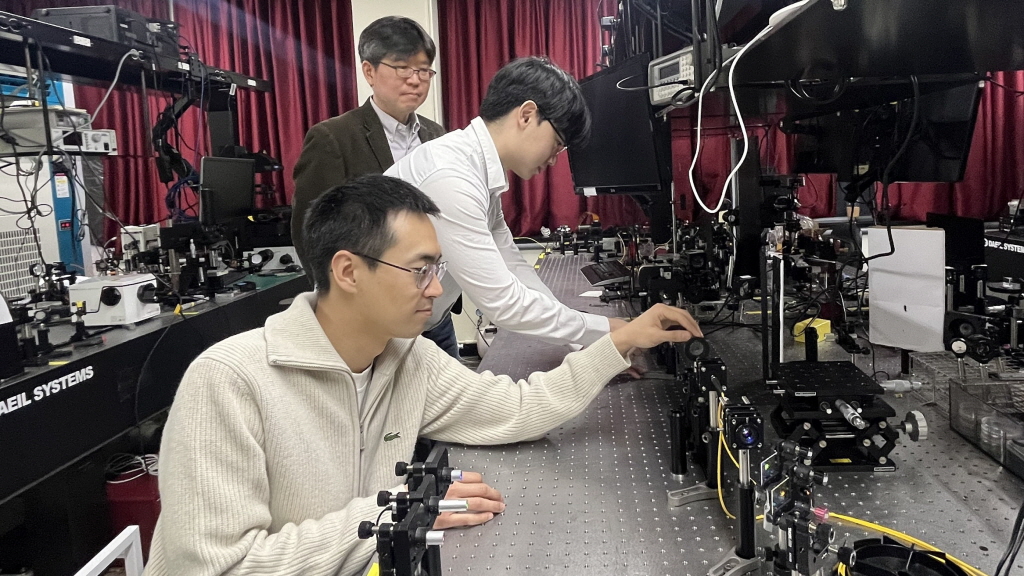삼성전자와 포스텍(POSTECH)이 최근 산학협력을 통해 색수차가 없는 ‘무색수차 메타렌즈’ 개발에 성공했다. 이번에 진행한 ‘무색수차 메타렌즈’ 연구 논문은 세계적인 학술지 ‘네이처 머티리얼스(Nature Materials)’에 게재됐다.
삼성전자·포스텍 ‘무색수차 메타렌즈’ 개발, 차세대 디스플레이 개발 기여
색수차가 없는 메타렌즈가 개발돼 이미지 왜곡 없이 넓은 시야각을 확보할 수 있어 향후 XR 웨어러블 기기 등 다양한 광학 시스템 개발에 기여할 것으로 기대된다.
삼성전자와 포스텍(POSTECH)은 최근 산학협력을 통해 색수차가 없는 ‘무색수차 메타렌즈’ 개발에 성공했다. 또한 홀로그래픽 디스플레이와 결합할 경우 다양한 광학 수차를 보완할 수 있음을 증명했다.
이번에 진행한 ‘무색수차 메타렌즈’ 연구 논문은 세계적인 학술지 ‘네이처 머티리얼스(Nature Materials)’에 게재됐다.
이번 프로젝트는 삼성전자 삼성리서치 문석일 박사와 포스텍 노준석 교수가 주도했으며, 포스텍 최민석, 김주훈, 신길수 연구원이 공동 1저자로 참여했다.
연구팀은 기존 메타렌즈의 설계방식을 개선해 모든 메타 구조체 간의 상호 관계를 고려한 알고리즘을 개발해 색수차를 없애는 데 성공했다.
그 결과 얇은 두께를 유지하면서도 렌즈 크기를 기존보다 3∼5배 키울 수 있게 되어 넓은 시야각을 제공한다.
또한 메타렌즈의 초점력을 가지면서도 이미지 품질이 더욱 향상됐다.
이번 연구는 렌즈의 크기와 무게를 획기적으로 줄일 수 있는 기술로, 차세대 디스플레이 개발에 중요한 기여를 할 것으로 기대된다.
메타렌즈는 빛의 회절을 제어할 수 있는 나노 크기의 구조체로 구성된 평면 렌즈로, 기존 볼록 광학 렌즈에 비해 크기와 두께를 획기적으로 줄일 수 있는 장점이 있다.
반면에 큰 색수차로 인해 이미지가 왜곡되는 한계가 있었다.
색수차는 렌즈를 통과하는 빛이 굴절될 때 서로 다른 파장의 빛이 각기 다른 방향으로 휘어져 이미지의 색상이 번지는 현상이다.
이번 연구를 통해 콤팩트하면서도 높은 품질의 이미지를 제공하는 XR 웨어러블 기기 및 다양한 광학 시스템에 활용될 전망이다.
한 장의 무색수차 메타렌즈와 홀로그래픽 디스플레이를 결합하면 여러 장의 렌즈를 결합하지 않고도 이미지 왜곡 없이 넓은 시야각을 확보할 수 있습니다.
특히 작고 가벼우면서도 피로도가 적은 가상 영상을 제공해 XR 기기뿐만 아니라 일반 디스플레이, 카메라, 센서 등 다양한 광학 시스템에 활용될 수 있다.
